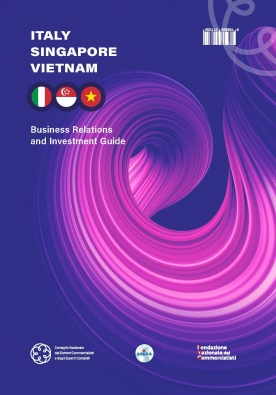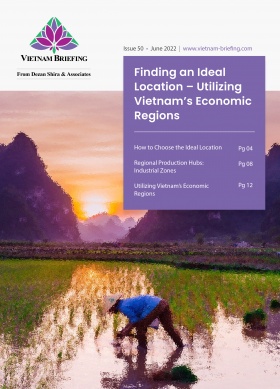Tet Flower Markets Reveal Fertile Floriculture Market in Vietnam
Fresh cut flowers are an integral part of Lunar New Year (Tet) celebrations in Vietnam with huge cultural significance. Flowers are placed as offerings to the ancestors at altars in homes and businesses around the country. This usually occurs on special occasions, such as a death anniversaries, throughout the year, culminating with huge displays of flowers during Tet.
This trend, coupled with having the seventh fastest growing middle-class in the world, makes Vietnam an import and export epicenter for fresh-cut flowers. In fact, with an expected CAGR of 11.5 percent over the next five years, Vietnam’s floriculture market is expected to add an additional US$283 million by 2026.
And with demand increasing, supplies will need to increase too. This presents two key opportunities for foreign floriculture firms:
- For exporters: Imports are often used to plug gaps created by unpredictable weather conditions in flower markets the world over and Vietnam is no exception.
- For investors: Domestic enterprises will need investment to ramp up production, including in training and technology.
Exporting flowers to Vietnam
In 2022, Vietnam imported a little over US$35.5 million worth of cut-flowers and cut-flower related products. This was more than double the US$17.3 million the country imported in 2021, according to Comtrade data.
Top 5 source countries for cut-flower imports into Vietnam, 2022
|
Country |
Value US$ |
|
Thailand |
$15,359,650 |
|
China |
$12,889,538 |
|
Malaysia |
$2,528,751 |
|
Ecuador |
$1,796,431 |
|
Netherlands |
$1,778,318 |
Growth in this area can in large part be attributed to Vietnam’s enthusiastic approach to trade. With a total of 15 multilateral free trade agreements, exporting agriculture products to the Southeast Asian nation has become much easier. These agreements have, at least in part, contributed to an almost doubling of flower imports since 2011.
Investing in Vietnam’s floriculture market
Vietnam’s floriculture sector not only caters to huge domestic demand, but also export markets. In fact, Vietnam exported just over US$62 million worth of floriculture products in 2022.
Top 5 export markets for Vietnam’s floriculture products
|
Country |
Value US$ |
|
Japan |
$39,619,236 |
|
Korea |
$8,548,571 |
|
Australia |
$5,335,924 |
|
China |
$2,587,025 |
|
Other Asia |
$2,275,341 |
Source: Comtrade
FDI in Vietnam’s horticulture sector
Foreign direct investment (FDI) in Vietnam’s agricultural sector has been relatively stunted compared to other industries. In 2022, there were just 12 new FDI projects for a total of US$68 million in agriculture.
Furthermore, between 2009 and 2021 there were just 2,000 projects with foreign investors in the agriculture sector. These projects account for just 5.7 percent of agricultural projects in Vietnam or US$17.64 billion worth of investment. This equates to 4.3 percent of total investment in the sector over that period.
However, this may soon change.
However, this may soon change with the government actively promoting investment in this sector.
For example, Decree No 57/2018/ND-CP, offers training and market development support alongside financial incentives and subsidies to increase productivity through new technology in Vietnam’s agricultural sector.
Between 2010 and 2020 Vietnam’s agriculture sector averaged a growth rate of 2.83 percent and FDI was minimal.
Free trade agreements and floriculture in Vietnam
Vietnam is now part of a myriad of free trade agreements that have reduced or eliminated tariffs on flowers exported to some of the world’s wealthiest economies.
The EVFTA, for example, saw all tariffs on fresh flowers from Vietnam eliminated as soon as it came into force in August 2020.
Not only has it become cheaper to export flowers from Vietnam, but the demands of free trade agreements, particularly with developed nations, in terms of quality, are also driving improvements in export products and procedures.
Australia, for example, with which Vietnam participates in the AANZFTA, has provided technical assistance in terms of irradiation and vapor heat treatment for agricultural products to ensure they meet Australian biosecurity standards.
It is measures like these that have improved and continue to advance Vietnam’s fresh-cut flower exporting capabilities.
Key players in Vietnam’s floriculture market
Dalat Hasfarm Co. Ltd. was established in 1994 by Thomas Hooft of the Netherlands. Its principal operations are in Dalat in Vietnam’s south. Dalat Hasfarms distribution network extends to China, New Zealand, Indonesia, and Japan.
Fresh Flower World Joint Stock Co. based in Ho Chi Minh City is another key domestic player in Vietnam’s flower market. Established in 2006, it boasts export customers in the USA, Canada, Australia, UK, Germany, France, and Japan.
There are also a number of international floriculture companies operating in Vietnam, including Dummen Orange from the Netherlands, Taiwan’s Royal Base Corp., and Selecta Cut Flowers SAU from Germany.
Key locations for floriculture enterprises in Vietnam
With a tropical climate and abundant rainfall, Vietnam provides ideal growing conditions for a number of plants and flowers. Current flower growing operations in the Southeast Asian nation can be found mainly in the south. Two key areas are Dalat, north-east of HCMC, and Dong Thap, to HCMC’s south-west.
Dalat
Dalat is well known in Vietnam as the nation’s horticultural hub. A temperate climate with high humidity has made this part of Vietnam ideal for a broad range of perennials. Roses, in particular, are commonly grown in Dalat and exported around the country and the world.
In 2020, Dalat was producing around 3.1 billion flowers each year across 9,000 hectares of flower farms, around 10 percent of which were exported.
Dong Thap
Not quite as well known as Dalat but still providing optimal growing opportunities for floriculture in Vietnam, Dong Thap, is another key location for developing floriculture enterprises.
Dong Thap reportedly produced US$178 million worth of flowers and ornamental plants in 2020 with local farmers reportedly earning around US$17,500 per hectare of flowers and ornamental plants.
Flower tourism in Vietnam
On a side note, taking photographs with flowers in bloom has become a popular pastime for Vietnamese people. Both Dalat and Dong Thap have become popular domestic tourist destinations around the Lunar New Year and in the springtime when flowers are in bloom.
Many flower farms in both regions capitalize on this by offering tourism and hospitality services, in addition to their flower farming operations, as a second income stream.
Dong Thap currently boasts over 100 agricultural tourism sites. During Tet last year it recorded over 122,000 visitors contributing thousands of dollars to the local economy.
Entering Vietnam’s floriculture market
Vietnam’s floriculture market has lots of room for development. With rising incomes allowing Vietnam’s burgeoning middle class to buy more expensive and exotic plants, flower exporters elsewhere in the world should be looking at Vietnam as a possible new market for their products.
At the same time, the local industry will need investment to maintain its growth trajectory. Investments in new technology and training may boost Vietnam’s floriculture output which could pay big dividends for foreign investors.
To learn more about the opportunities in Vietnam’s floriculture sector contact the experts at Dezan Shira and Associates.
This post was first published January 20, 2022. It was since been updated to reflect the latest data.
About Us
Vietnam Briefing is published by Asia Briefing, a subsidiary of Dezan Shira & Associates. We produce material for foreign investors throughout Eurasia, including ASEAN, China, India, Indonesia, Russia & the Silk Road. For editorial matters please contact us here and for a complimentary subscription to our products, please click here.
Dezan Shira & Associates provide business intelligence, due diligence, legal, tax and advisory services throughout the Vietnam and the Asian region. We maintain offices in Hanoi and Ho Chi Minh City, as well as throughout China, South-East Asia, India, and Russia. For assistance with investments into Vietnam please contact us at vietnam@dezshira.com or visit us at www.dezshira.com
- Previous Article Thai Nguyen’s Development Master Plan for 2021 to 2030
- Next Article Top 6 FDI Locations in Vietnam in 2023 and Why










